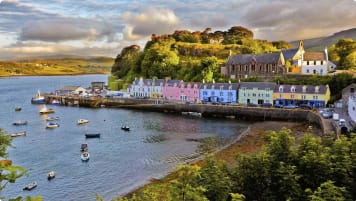Peat and Scotland
Article about Peat, a historically important organic product for fuel and making whisky. Read and learn more about Scotland, its history, the islands and neolithic past before joining a small group tour for senior couples and mature solo travellers.
4 Oct 19 · 7 mins read
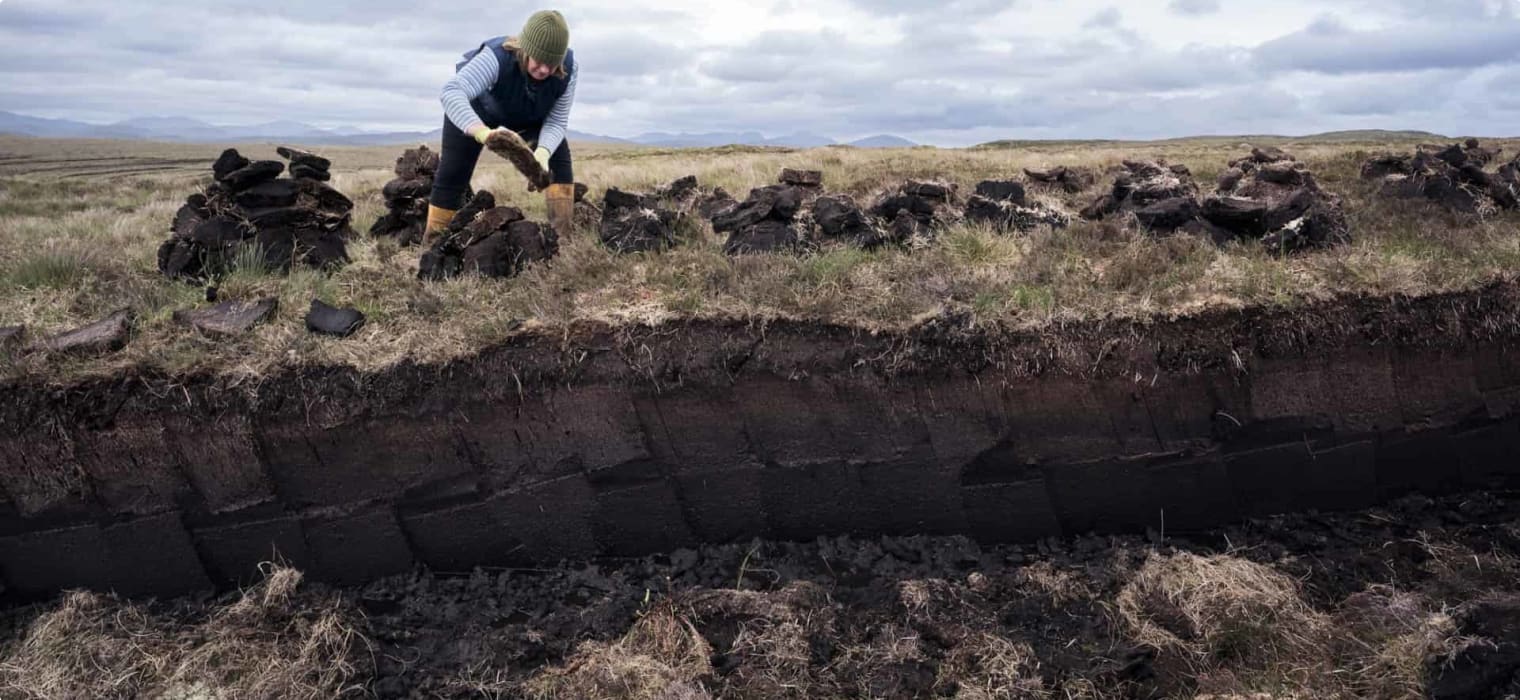
Peat and Scotland
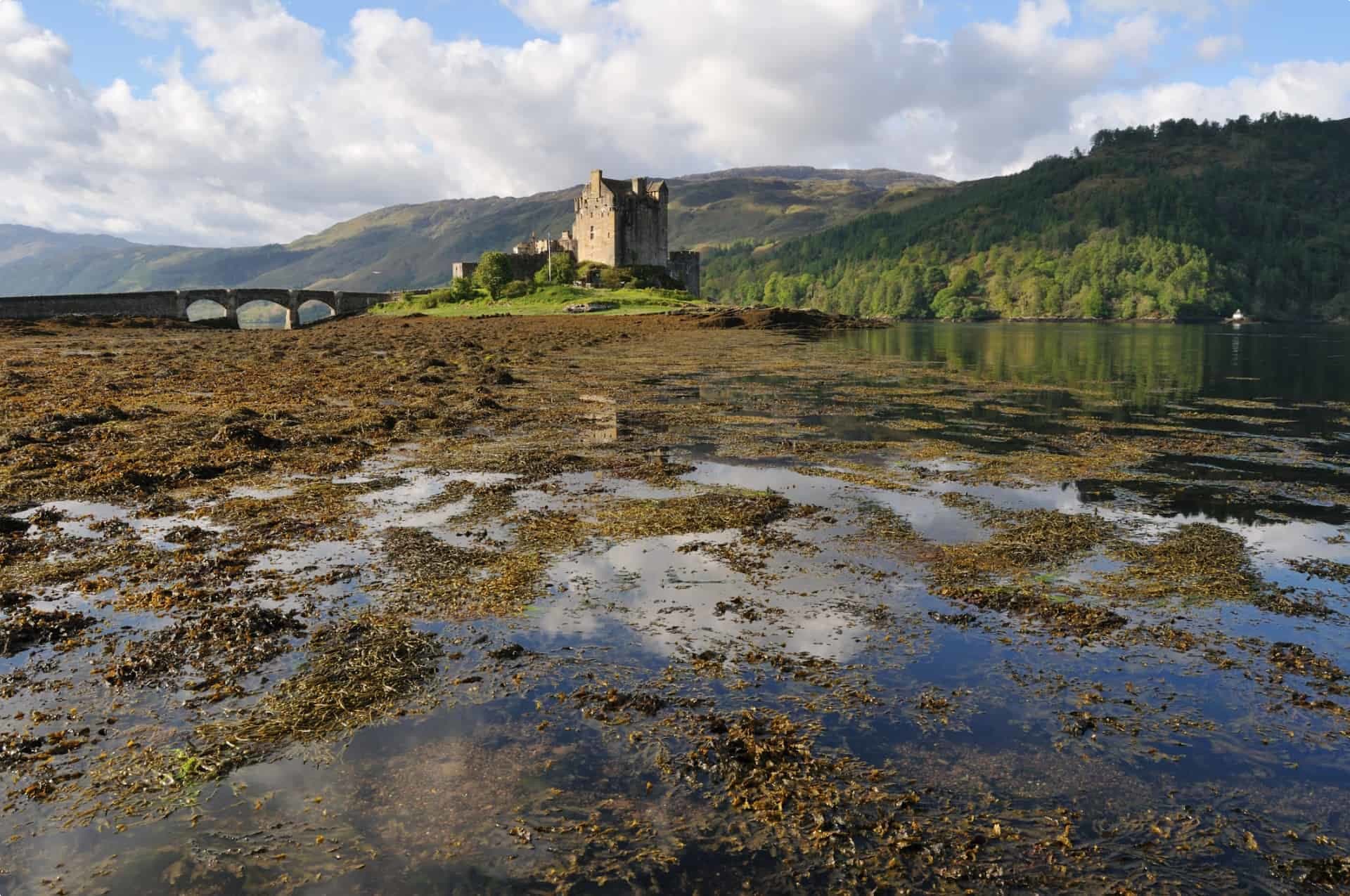
Peat is a traditional fuel in Scotland that is formed from layers upon layers of partially decomposed organic material, such as sphagnum mosses and other plants. Peat forms in waterlogged bogs, which is a type of acidic wetland, the high acid content preventing vegetation from fully decaying. This process is very slow: to form one metre of peat, you need to wait 100 years. Peat formation is the first stage in the millions-year-long process of coal formation. National Geographic calls this unique material the “forgotten fossil fuel“.
In Into the Peatlands: A Journey through the Moorland Year (Birlinn Limited, 2018), author Robin A. Crawford calls it “a special ingredient in the making of Scotland” (p. 13). Once widely used by crofters (or a worker on a farmstead), this fuel now needs to be replaced with renewable sources of energy, and the bogs within which it forms turned back into thriving wetlands as we fight the effects of climate change. In this article, we will take a closer look at peat and how it shaped Scottish life–and how it will possibly shape the future.
This is part of our collection of Scotland-related articles that we share as backgrounders before you go on a Scotland tour with us, or to simply help you as you firm up your travel plans. All of those articles can be found here.
The Formation of Scotland’s Peat Bogs
According to Andrew Fisher in his book Scotland (The Windrush Press and Cassell, 2002), while cave art was flourishing in other parts of Europe such as France and Spain, Scotland was still covered in ice and virtually uninhabitable (p. 2). The retreat of the ice and the warmer intervals between the Ice Ages (p. 3) led to migration and settlement in this region.
It also led to bog development, which according to Crawford (2018) began at least 5,000 years ago (p. 19). “Cool, wet and, usually, oceanic climate are ideal for the formation of peat bogs,” says Crawford (2018, p. 19). Peat bogs are also found in Russia, Canada, northern Europe, and the wet climates in Africa and Indonesia in South East Asia, but in Scotland, according to Katrina Marsden and Susanna Ebmeier in their 2012 report Peatlands and Climate Change, “around 20% of Scotland’s land area is covered by blanket bogs alone”–about the size of Wales.
Scotland has two distinct topographic regions, the Highlands in the north and west and the Lowlands in the south and east, which also gave birth to two kinds of bogs. Blanket bogs, which develop over large areas, are found in the Highlands and the Western Isles, while the Lowlands have raised bogs, which are dome-shaped and form over former loch or lake basins. Much of the Lowland bogs were drained in the 18th century to create farmland and accommodate rapid population growth (Crawford, 2018, p. 19).
Meanwhile, in the Highlands, peat was cut from the ground and served as a vital “lifeline” for crofters.
Crofters and the Peatlands
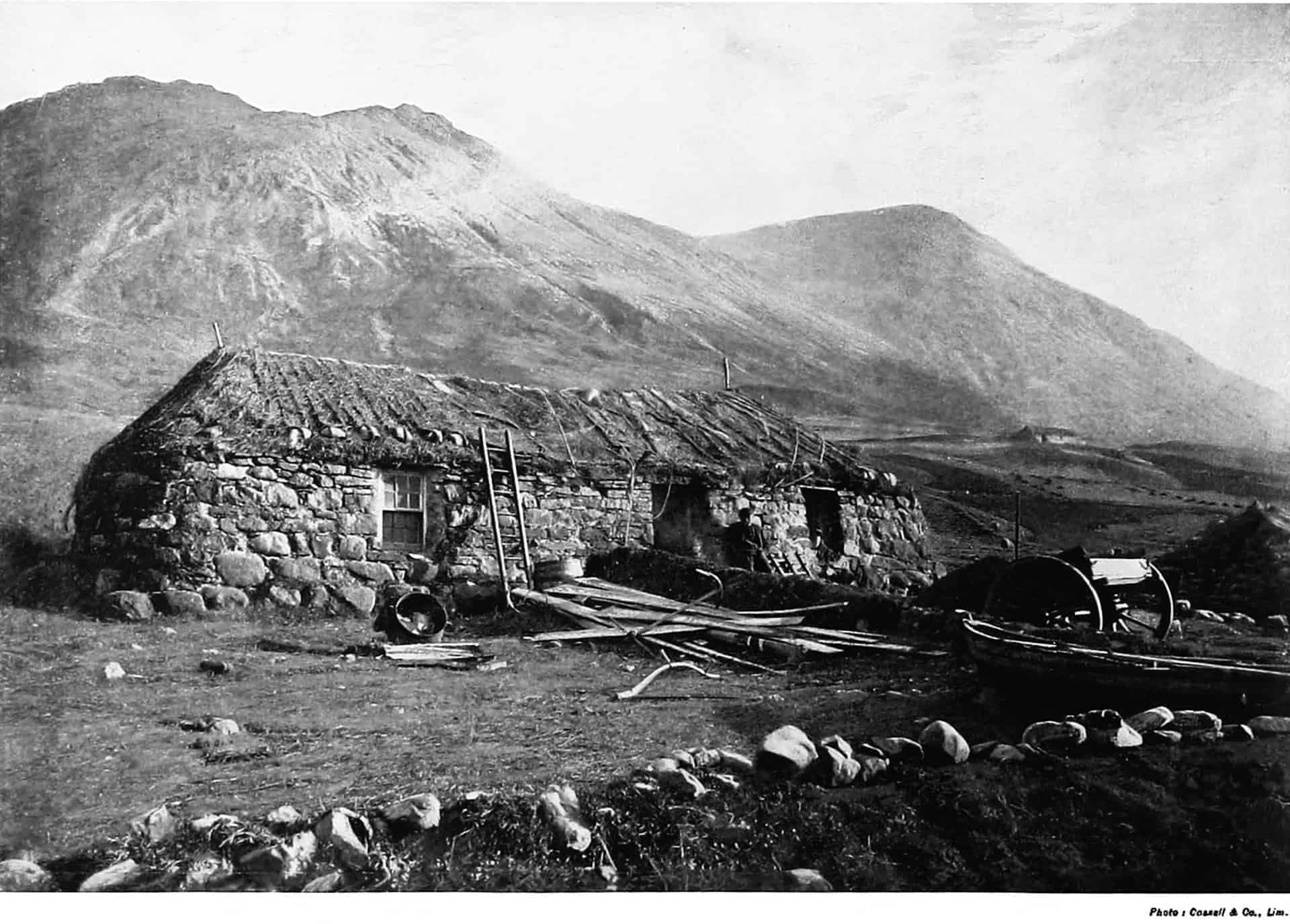
In the harsh climate of the Highlands, not a lot of trees can grow. In the 19th century, while people living in other parts of the world could simply gather branches or chop up wood for fuel, the Highland crofter needed to cut his fuel out from the ground.
Beyond the physical division of the Highland Boundary Fault, the Highlands and the Lowlands also diverged culturally following the Battle of Hastings that marked Norman ascendancy in England. The Anglo-Norman feudal system was introduced to the Lowlands, but the clan system persisted in the Highlands. The Lowlands also became urbanised while the Highlands remained rural, with Highlanders living in joint-tenancy farms under the clan system.
The Kingdoms of Scotland and England were united as the United Kingdom of Great Britain in the 1707 Act of Union, and the new British government introduced reforms that became known as the Highland Clearances. The clan system deteriorated and outsiders were encouraged to buy land in the Highlands. The new landowners evicted thousands of families in the early 19th century to establish sheep or cattle farms, and the tenants were resettled in coastal crofts.
Harvesting Peat
The crofters had no legal claim to the land they tilled, and after years of hardship (particularly during the Potato Famine), many of them left for the Lowlands or abroad. In 1886, the British Parliament passed the Crofters Holdings Act, which eliminated the possibility of future evictions, and the 2003 Land Reform Act gave crofters the right to buy their land and become an owner-occupier.
Crofting is still practised in some rural areas, particularly in the counties of the Highlands and Islands of Scotland. In the Outer Hebrides, a typical croft is a few acres with livestock and enough crops to feed the family and provide a small income. Many crofters supplement their income by working paid jobs or selling handicrafts.
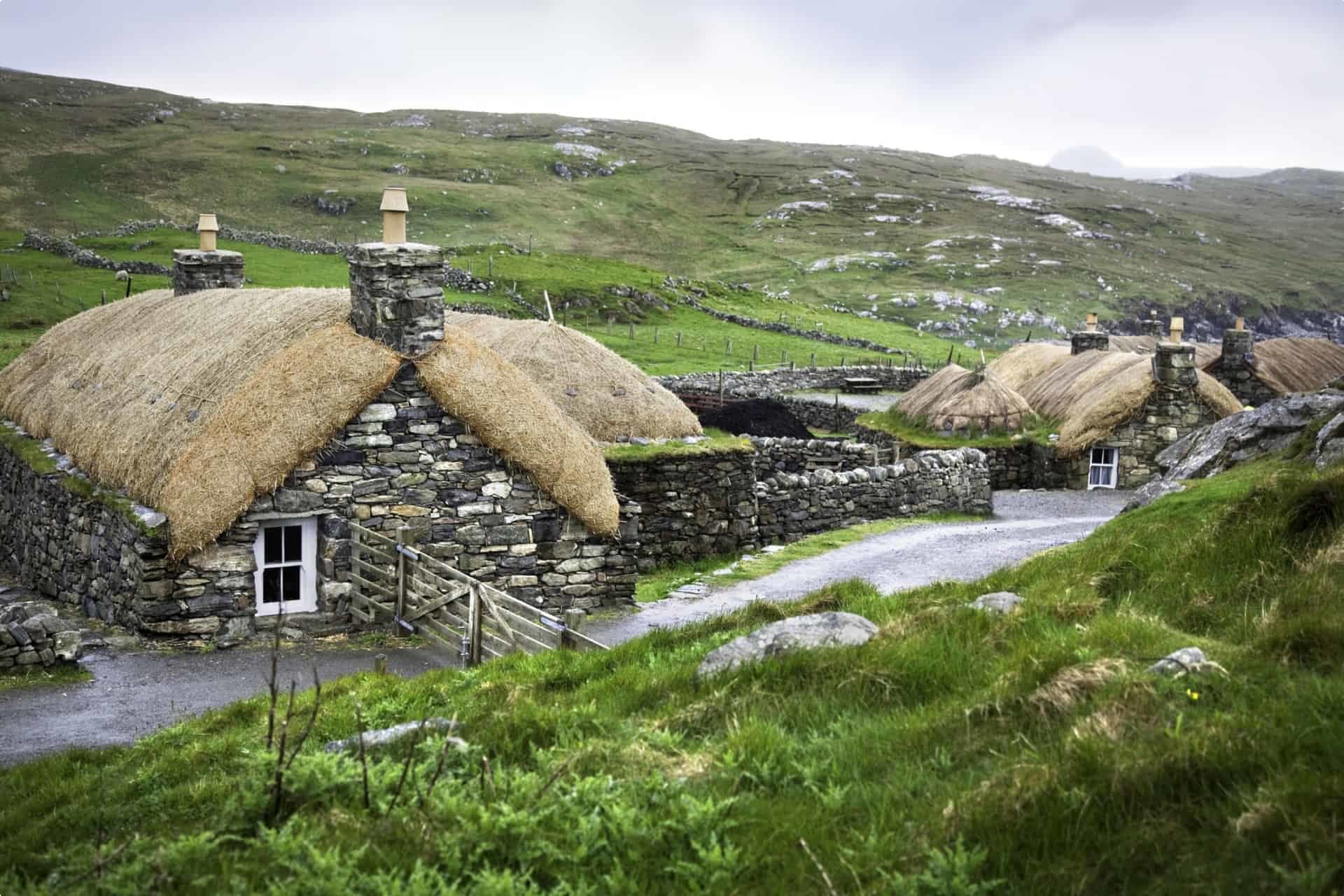
Back in the early 19th century, access to peatlands was part of the crofters’ tenancy and became the fuel of choice, even after coal arrived around 1900. Peat, unlike coal, was free, only requiring the kind of back-breaking work that the crofters were used to as subsistence farmers.
During springtime, families head out from their crofts into the moor, using a spade to remove the layer of living vegetation, before using a tairsgeir or tusker to cut the peat bank for fuel (Crawford, 2018, p. 65). The deeper the origin of the peat, the darker its colour and the hotter it will burn.

The peat blocks were then dried and moved back to the croft and into the crofter’s home. At least 15,000 peat blocks could last a family of four for a year (Crawford, 2018, p. 67). Cutting, drying, and transporting the peat blocks was a big job, a job that was not restricted to the man of the household; everyone—man, woman, and child—needed to lend a hand. The blocks were carried in creels (wicker baskets) worn like backpacks; later, with advancements of technology, they would be transported by lorries.
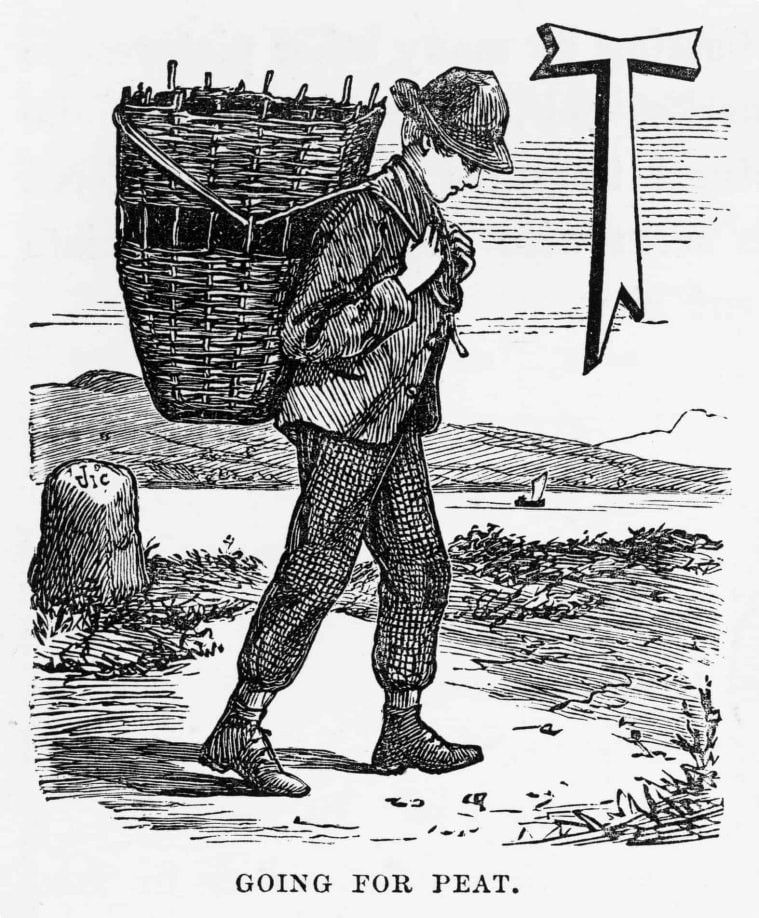
It is unclear how peat as a fuel was discovered; Crawford suggests a lightning strike might have ignited the moors and revealed that the ground beneath could feed fire (Crawford, 2018, p. 116). Peat was burnt in the central hearth—an open fire in the centre of the floor—to provide warmth to the family. The central hearth was also where food was cooked, the pot suspended by a rope (p. 120).
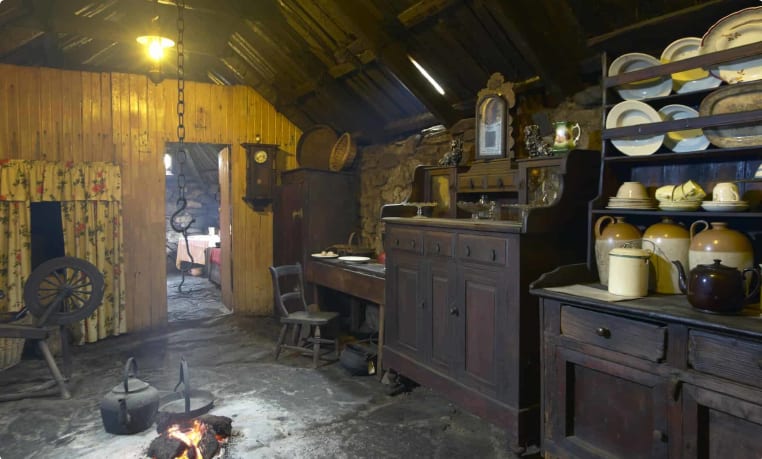
Peat also figures in the production of one of Scotland’s main exports: whisky. According to The Independent, “Peat is Islay’s signature in the world of whisky.” The barley used to create whisky on the Isle of Islay, the southernmost island in the Inner Hebrides, are dried over peat fire, infusing it with a distinctive aroma and taste. Some whisky drinkers find the “peaty” smell repugnant, while others love it. (Read more in our article about Scotch whisky here.)
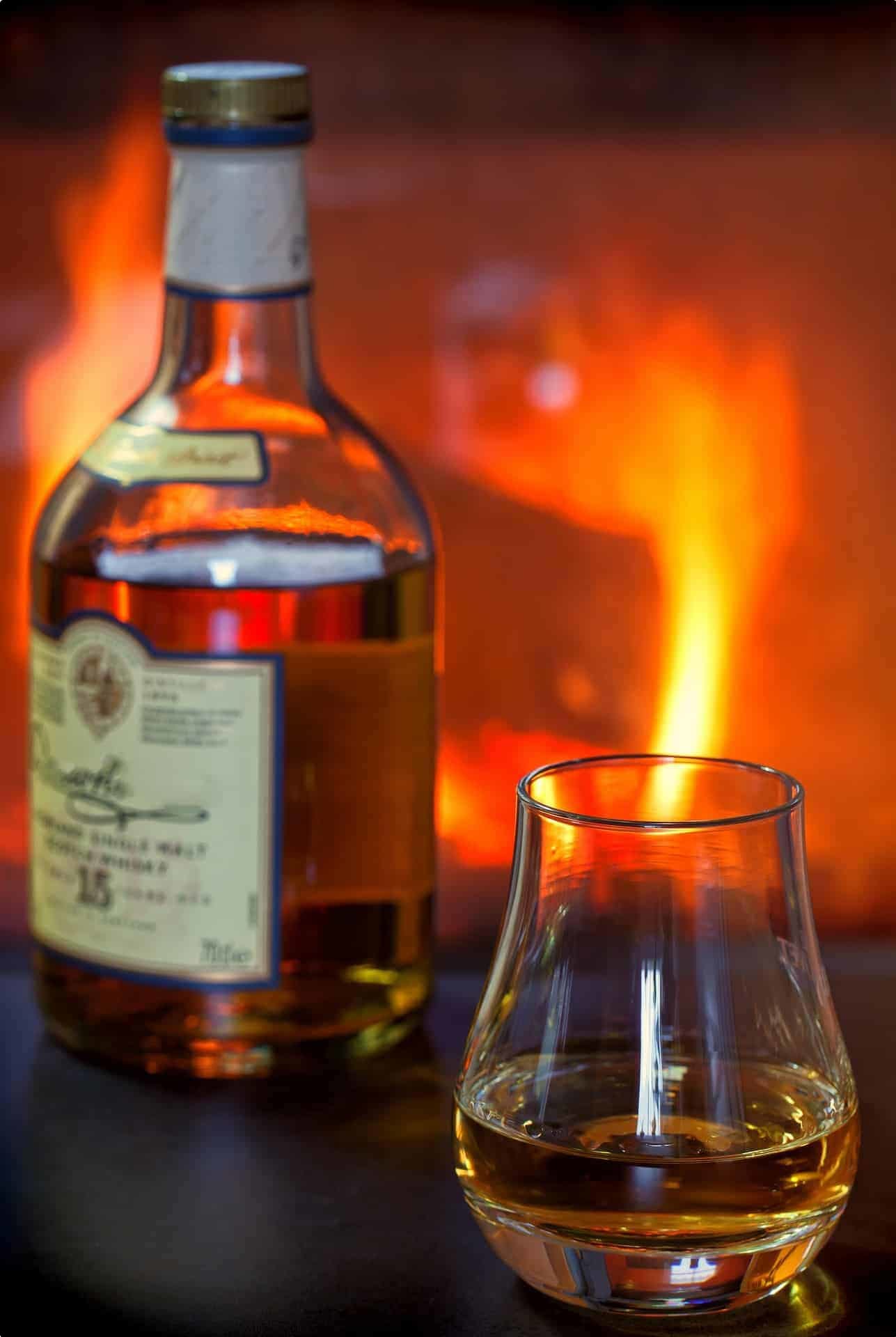
“Worse than Coal”
With all of peat’s contribution to Scottish life—free fuel for crofters in the Highlands, a distinct flavour for whiskies on the Isle of Islay—it is also “the most damaging fuel in terms of global warming”. As Kevin O’Sullivan reports, it is worse than coal, generating less energy per tonne but producing higher CO2 emissions per unit.
Simply draining water away from peat bogs—which was what was done to the Lowlands’ raised bogs back in the 18th century to make way for agriculture—results in the release of carbon back into the atmosphere as the peat would dry and decompose. Peatlands that are cultivated in this way can release as much as 24 tCO2e (tonnes of carbon dioxide equivalent) per hectare per year. A “carbon dioxide equivalent” is a numerical value that allows scientists to compare the global warming potential of different greenhouse gases relative to carbon dioxide. 24 tonnes of carbon dioxide may seem small, but remember that this is per hectare per year.
Peat as Carbon Sinks
Undisturbed, however, the peat bogs can act as excellent carbon sinks. Carbon sinks are natural systems on the planet that suck up carbon dioxide from the atmosphere. Most resources would mention forests and oceans, but peat bogs should also be on this list. Peatland ACTION, which has funding from Scottish Government and is working to restore the peatlands of Scotland, say that “Scottish peatlands store 1.7 billion tonnes of carbon; this is equivalent to 140 years’ worth of Scotland’s total annual greenhouse gas emissions.” Peatlands also play a role in supporting biodiversity and preventing floods.
Ireland has recognised this as well. As O’Sullivan reports, peat “was responsible for 3.4 million tonnes of emissions in Ireland during 2016…[p]hasing out that heat component will make a big difference to Ireland’s emissions”. Two years later, the semi-state peat-harvesting company Bord na Móna announced the closure of 17 active bogs, and the closure of the remaining 45 in the next seven years.
Towards a “Net-Zero” Scotland
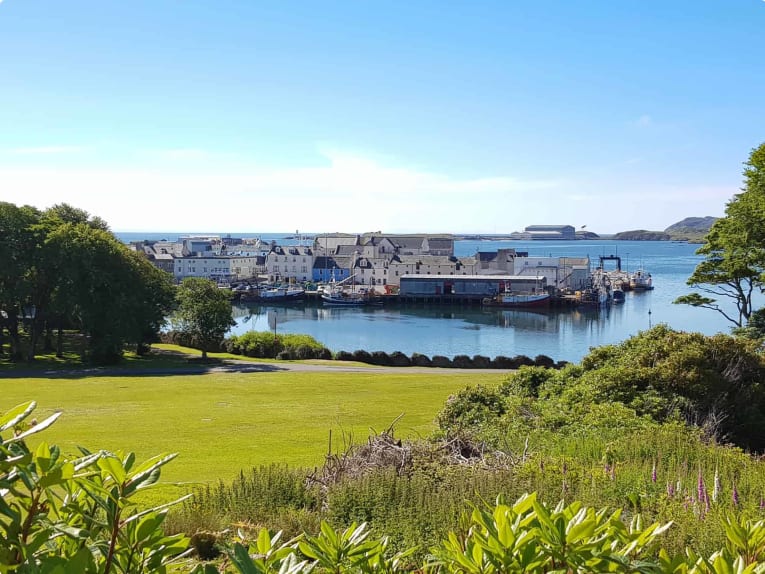
Scotland is catching up, and more. In September 2019, the Scottish government passed the Climate Change Bill, “the toughest climate change laws” of any country in the world, aiming to make Scotland a “net-zero society” (i.e. have all emissions offset) by 2045. Emissions will be offset, according to a report by the BBC, through measures such as “increased tree planting and carbon capture and storage technology”. Scotland’s target was five years ahead of the target set by the United Kingdom. Here’s to hoping Scotland’s peat bogs will help them reach this aim.
Travelling to Scotland; Related Articles
Perhaps this article stirred your wanderlust, and you would like to see Scotland’s peatlands and learn more about its history. Odyssey Traveller organises several tours in Scotland, all designed for the mature-aged and senior traveller, whether travelling solo or with a companion. Our Scotland tours include the 20-day Scottish Isles small group tour which journeys from Glasgow, to the Isles of Mull and Skye, to the Orkney and Shetland Islands, and finally to Edinburgh, with plenty of other stops along the way. Just click through to sign up.
This program is quite popular among our participants: as of June 2019, three departures are guaranteed (with one sold out!), which means the tours have reached the minimum number of participants required to operate the tour and will proceed this year and in 2020 (terms and conditions apply).
If you want to learn more, you may read our country spotlight on Scotland and the following articles:
- Questions about Scotland
- Shetland Islands Discovered
- Questions about the Outer Hebrides
- Islands of the Outer Hebrides: The Definitive Guide
- Visiting Scotland: Standing stones, neolithic history and whisky
We also have a short feature on Glasgow and Nelson Mandela Place and an article on Scotland & Scotch whisky which you may find interesting.
The rest of our Scotland-related articles can be found here.
Updated August 2021.
Related Tours
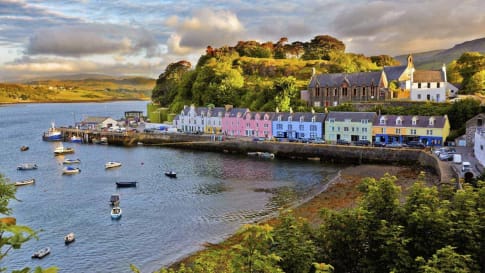
20 days
Jul, Sep, May, AugScottish Islands and Shetland small group tours for seniors
Visiting Scotland
An escorted small group tour for couples and solo travellers of the Scottish isles including the isle of Skye draws on local guides to share their knowledge of the destinations in this unique part of Scotland. UNESCO world heritage site are visited as breathtaking scenery and authentic experiences are shared in a group of like minded people on this guided tour of remote Scotland.
From A$16,695 AUD
View Tour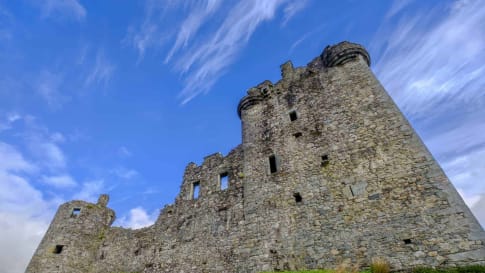
22 days
Jul, Sep, Jun, AugScotland small group tour | Tracing 5,000 years of history
Visiting Scotland
This guided tour of Scotland with a tour leader and local guides includes the isle of Skye, Orkney islands, the Scottish highlands with breathtaking scenery. Edinburgh including the royal mile, Palace of Holyroodhouse, Fort William, Urquhart castle, Stirling castle, loch lomond, Hadrians wall and New Lanark also a UNESCO World heritage site.
From A$15,995 AUD
View Tour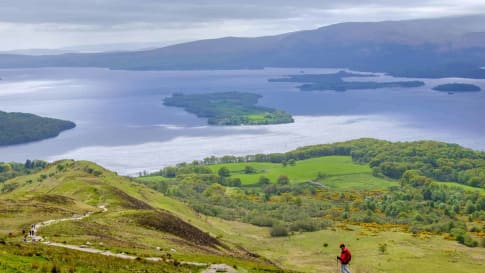
13 days
Jun, Aug, MayScotland's Great Trails Walking Tour
Visiting Scotland
An escorted walking tour of Scotland. This trip is mainly in the Scottish Highlands. Your tour leader guides you to Stirling Castle, Loch Lomond and Craignorms National park with experienced local guides. The tour for mature couples and solo travellers finishes in Edinburgh with time to visit Edinburgh Castle and the Royal mile a UNESCO World heritage site.
From A$11,560 AUD
View Tour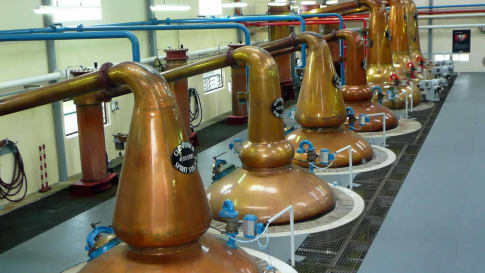
19 days
JulWhisky and Other Scottish Wonders
Visiting Scotland
A guided small group tour of Scotland is a day tour collection that includes Edinburgh, the royal mile, Edinburgh castle, and the old town a UNESCO World heritage site Experience and learn about, Kellie castle, St Andrews, Skye, Balmoral castle, Loch Lomond and Loch Ness as well touring the Scottish highlands to finish in Glasgow.
From A$17,525 AUD
View Tour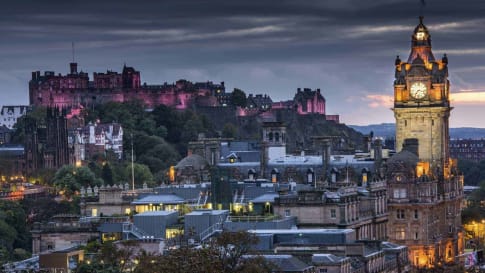
From A$15,995 AUD
View Tour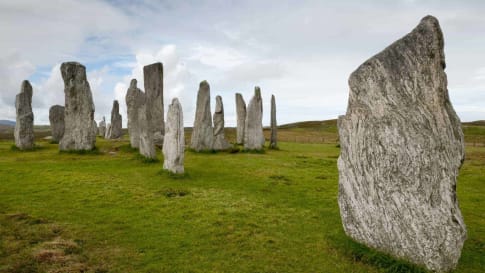
21 days
AugPrehistoric Britain small group history tour including standing stones
Visiting England, Scotland
This guided tour invites you to explore UNESCO World heritage sites at Skara Brae in the Orkneys, Isle of Skye, and Stonehenge in a prehistoric tour. This escorted tour has trips to key sites in Scotland, and the Irish sea in Wales such as Gower Peninsula and National Museum in Cardiff and England. Each day tour is supported by local guides.
From A$16,750 AUD
View TourRelated Articles

10 great books to read on the Scottish Isles
Why read books about the Scottish Isles before travelling there? This is recommended list of books for mature & senior travellers planning to travel to the Scottish Isles either as part of an Odyssey Tour…
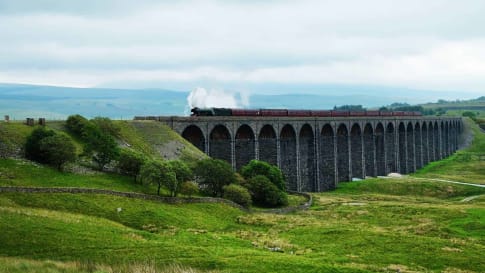
15 books on Britain's Industrial Revolution
Fifteen books on Britain’s Industrial revolution This reading list on Britain’s Industrial revolution complements Odyssey Travellers escorted small group tour that traces via the canal and railway network, the evolution of this monumental change in…
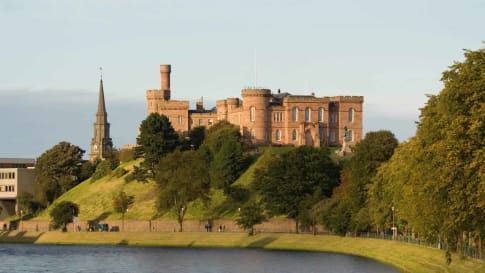
Birth of Scotland
Escorted small group tours for senior couples and mature solo travelers seeking to learn. Article about Scotland and you can learn more about the Jacobites, Orkney or Shetland islands as well Edinburgh, Aberdeen and more.
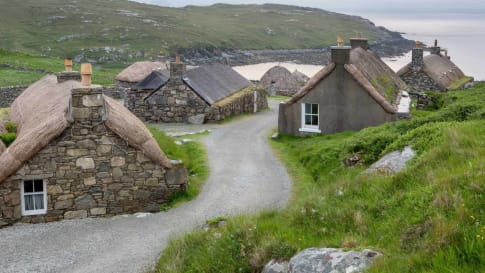
Islands of the Outer Hebrides: The Definitive Guide for Travellers
Scotland's Outer Hebrides are discussed in this article to assist the mature solo and couple in planning to visit Scotland and the British isles on a small group tour.
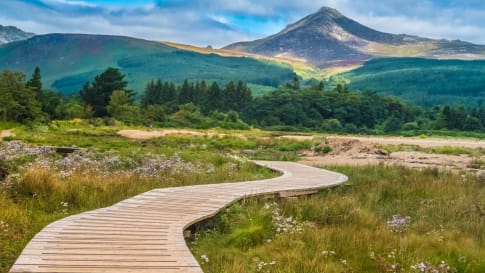
Isle of Arran, Scotland
Article about the Isle of Arran, a short journey from Glasgow. For senior couples and mature solo travellers interested in celtic history, the islands of Scotland including the inner and outer Hebrides on a small group tour.
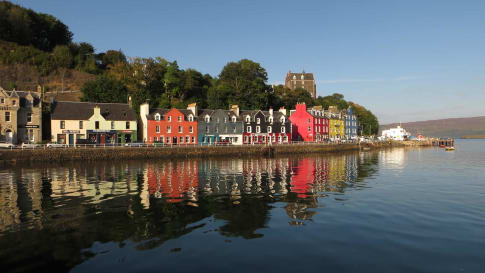
Isle of Mull, Scotland
Article for mature and senior travellers whether couples of solo travellers who are interested in exploring the inner Hebrides and outer Hebrides islands of Scotland, the ancient history including standing stones and celtic history and single malt whiskies with a hint of peat.

Isle of Skye, Scotland
Article about Scotland's Isle of Skye for senior couples and solo travellers seeking to explore on a small group tour of the Scottish isles learning about Scottish history, the Vikings and Atlantic trading routes.

Lumps and Bumps: How to Read the British Landscape
The British landscape has been worked and re-worked. It is secrets of this palimpsest landscape is revealed through drainage patterns and prehistoric features all the way through to the modern day. These small group tours for mature and senior travellers examine the landscape from the Neolithic, to Roman, through the seven ages of Britain in walking tours and history tours of Britain.
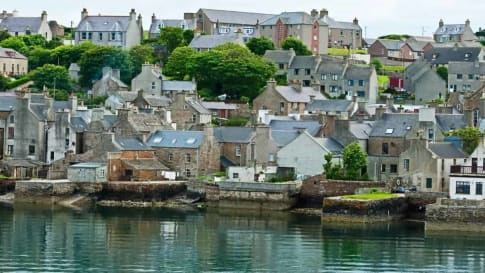
Orkney Islands, Scotland
Explore the Orkney and other isles of Scotland on a small group tour for senior couples or solo travellers interested in Scottish history. Learn about Skara Brae and prehistoric Britain as well as the importance of Peat and Whisky.
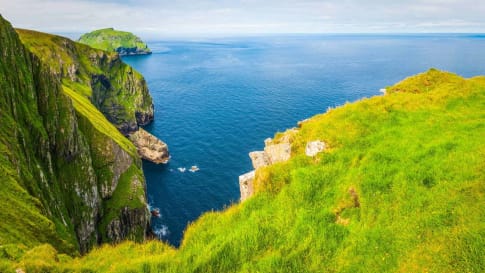
Questions about the Outer Hebrides, Scotland for senior travellers.
Explore and learn about on a Seniors small group tour of the Orkney Islands and other Scottish islands. Learn about the pastoral, cultural and historic settlement of the islands including Skara brae.
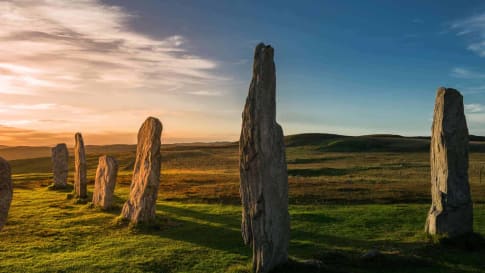
Shetland Islands Discovered: The Definitive Guide for Travellers
Article for senior and mature travellers, couples or solo travelers, interested in visiting the Shetland isles of Scotland. Explore on a small group tour to learn about the Bronze age, standing stones, peat and whisky and more when visiting the Scottish isles.
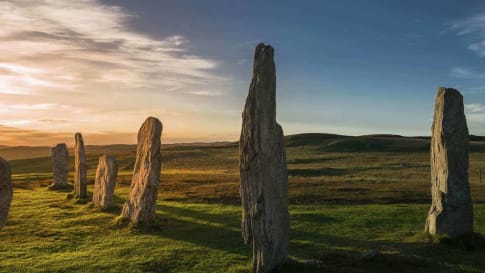
Visiting Scotland: Standing stones, neolithic history and whisky
Scotland draws travellers. Learn about Scotland its Islands, Skara Brae, Edinburgh, Glasgow and places in between such as Perth, Oban and Thurso and join a small group tour of Scotland for mature solo travellers and couples.
